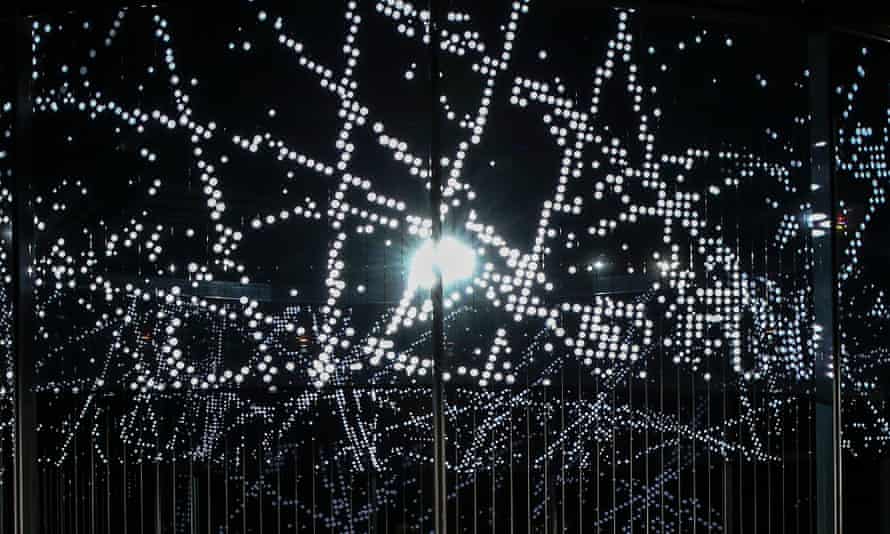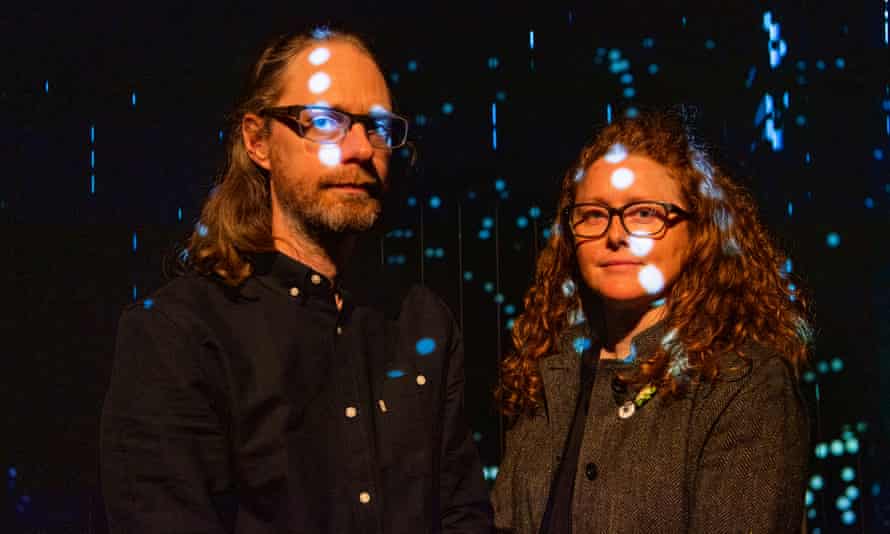Help, it’s 1,000 trillion degrees in here! The Big Bang artwork that makes scientists cry
What would it have been like to be inside the Big Bang? We meet the ultra-hi-tech art duo who are using light, sound and sub-atomic astro data to recreate the biggest explosion ever

‘Step into the heart of the Big Bang,” says the advert for Halo, a walk-in, 360-degree, audiovisual installation about to open in Brighton. Come off it, I want to retort. You couldn’t “step” into the Big Bang without first travelling 13.8 billion years back in time and then being extremely miniaturised. After all, the universe was, according to one estimate, just 17cm in diameter at its inception.
What’s more, it was dark inside the Big Bang. In fact, there was no light at all. True, if you stuck around for 380,000 years, according to Nasa, you might have been able to see something because that was when free electrons met up with nuclei and created neutral atoms that would have allowed light to pass through. But who has 380,000 years to hang around waiting in the dark?
And then there was the heat, my God, the heat. If you stepped inside the Big Bang, you’d have got more than a tan. I’m no scientist, but even I know that there would have been no selfies, nor indeed any eyeballs – since their melting points are much lower than the 1,000 trillion Celsius that prevailed at the time. And that’s way above the health and safety parameters at the University of Sussex’s Attenborough Centre for the Creative Arts, where Halo receives its British premiere this week.

Halo is the work of Ruth Jarman and Joe Gerhardt, artists who like to dramatise extreme cosmic events with visual aids. Astrophysicists like to do this too. Stephen Hawking imagined a passing astronaut getting spaghettified as he crossed the event horizon into a black hole (a slimmer astronaut would have been vermicellied). The term Big Bang was derived by astronomer Fred Hoyle, even though he actually rejected the theory. Perhaps, like me, he found “big” and “bang” insufficient terms for an event that exploded even faster than my waistline during lockdown, going from nearly nothing to a diameter of 93 billion light years (the universe, that is, not my belt-size).
Undaunted, Jarman and Gerhardt have converted raw data culled from subatomic particle collisions at Cern in Switzerland, where they have been working as artists, into a melange of light, sound and curious tactile effects. “We have put data into a form where you can feel it,” says Jarman. “Data becomes sensation.”
I step into Halo to test this out. Lights flash on screens and underfoot, creating dots that become spirals, trails and other evanescent shapes. At the same time, I hear a synthesised clatter of sounds resembling a cross between a washing machine spin cycle and general industrial ruckus. I don’t quite feel like I’ve stepped into the Big Bang, but I have yet to experience what they call “the technological sublime” in which data is translated into something much more deranging that pretty patterns.

“What we don’t want to do,” says Gerhardt, “is produce something like those colourised photographs of nebulae and supernovas.” Their visuals, by contrast, are lo-fi black and white while what I’m hearing is anything but symphonic. “We try to make sounds that resonate physically in your body and create an emotional effect.” I am certainly feeling emotional, perhaps because I’m picking up on forces hitherto beyond my experience.
Inside Halo, 384 vertical wires are arranged in a circle surrounding visitors, each throbbing out the patterns of data in sync with the lights. If you touch a resonating wire, you can convince yourself you’re feeling the universe coming into being. “It’s on a 60-minute loop,” says Gerhardt, of the sound and vision. “But you won’t be able to tell that.” I want to stay for the full thing but, given the reduced throughput of visitors enforced by social distancing, lingering would be selfish.
Jarman says Cern scientists have welled up on stepping into Halo, apparently perceiving in it a simulation of the elegance they find in equations and theories. “For me,” says Professor Antonella De Santo, the Sussex University physicist involved in the project, “this is the first time I have sensed the scientific beauty I experience in my career in artistic form.” She tells me she stood at the centre of Halo with her eyes closed and felt she heard the rhythm of matter formation expressed as sound.
But Halo isn’t really about making scientists feel emotional. Semiconductor, as the duo behind Halo call themselves, are doing something even more discombobulating: namely getting humans to experience what goes on beyond the limits of human experience, the vast forces of nature operating on Earth and beyond, or shifting the imponderables of quantum physics into visual and auditory form.
In 2016, their installation Earthworks used seismic data from volcanoes, earthquakes, glaciers and human impacts to create a beguiling five-channel computer-generated animation that, in sound and vision, simulated the evolution of landscapes over thousands of years. Then they shifted from macro to micro, creating an installation called Parting the Waves that attempted to make the subatomically imperceptible perceptible by means of a colour-coded film. Semiconductor’s next project will see them working with Dundee University physicists who have collected data about the formation of planets.
Neither Jarman or Gerhardt have scientific backgrounds. Rather, they are making a kind of outsider science art. That outsider perspective gives them a refreshing sense of what science amounts to. “We think of science as all about facts,” says Jarman. “But what are facts? And what is data? A lot of what scientists know is more like fiction. What we’re doing is revealing their frameworks in a way that everyone can understand. Without a framework, we couldn’t know anything. But that framework isn’t fixed. It’s unfinished business.”
Professor De Santo agrees. “The best scientists are humble. They don’t presume to know everything. They live in uncertainty.” Indeed, for her that humble stance is what guides her work, which is at the cutting edge of the new physics that goes beyond what is known as the Standard Model. That model, she explains, told us there were 17 building blocks of nature: six quarks, six leptons, four force-carrier particles, and the Higgs boson. “But it was incomplete. It didn’t include gravity. It said neutrinos don’t have mass, which they do. And it didn’t include dark matter. I don’t believe in a theory of everything. I’m not arrogant enough to suppose we will ever know everything.”
Jarman giggles when I suggest Semiconductor are performing a kind of ritual enchantment, turning grey data into something that shakes us from our quotidian and making us feel the strangeness and charm of the world beyond human experience – but she doesn’t deny it. As my visit ends, I prepare to re-enter the quotidian. As I follow the green neon exit sign and step out of Halo, I reflect that there probably wasn’t a sign like that in the real Big Bang.

No comments:
Post a Comment